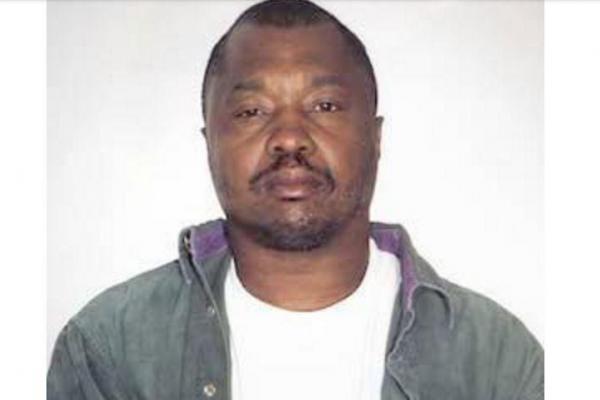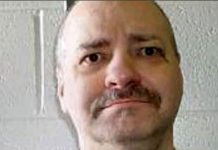
LOS ANGELES, Feb. 16 (UPI) — Eleven thousand one hundred and forty seven days after the murder of the first victim in the case, the man accused of being Southern California’s “Grim Sleeper” serial killer on Tuesday finally arrived at trial for the deaths of 10 women — as well as the attempted murder of another who barely escaped with her life.
Testimony began Tuesday in the capital murder trial of Lonnie David Franklin, Jr., who’s accused of terrorizing the Los Angeles area in the mid 1980s before disappearing completely in the 1990s, only to make a murderous comeback at the turn of the century.
During opening remarks, L.A. County Deputy District Attorney Beth Silverman described how the 10 victims fell into the clutches of a homicidal maniac who targeted troubled women on the streets of Los Angeles. During the remarks, the jury saw crime scene photos of the women’s bodies.
The case highlights a particular brand of terror in Los Angeles during the 1980s — a period in the city’s history that was marked by the arrival of not one, but two high-profile serial killers.
Immediately before the “Grim Sleeper” killings started, the city had been terrorized by the rampage of Richard Ramirez, who was later dubbed “The Night Stalker.” Ramirez, who killed 13 people between 1984 and 1985, was convicted and sentenced to death — though he died of cancer in 2013 while still awaiting execution.
“It was the perfect place and time for a serial killer to roam the streets of Los Angeles really without detection,” Silverman said, also noting that the start of the killer’s rampage coincided with the explosion of crack cocaine use on the city’s streets.
“The evidence in this case will tell a story, a story of a serial killer who stalked the streets of South Los Angeles, a serial killer who is responsible for the murders of 10 women,” she added.
The killer, accused of killing between August 1985 and New Year’s Day 2007, was named the “Grim Sleeper” because of the 14-year hiatus between an attack in November 1988 and his next victim — a 15-year-old girl — in March 2002.
Franklin, 63, a former mechanic and police officer for the city, was finally arrested in 2010 due to what investigators said was a DNA link.
Franklin’s defense attorney declined to make an opening statement Tuesday before the first witness, former Los Angeles Police Department detective Dennis Kilcoyne, took the stand.
“We started connecting the dots,” Kilcoyne said, recalling the task force he was a part of that was created specifically to capture the killer.
Prosecutors have said during the reign, Franklin specifically targeted troubled women who worked a high-risk profession, prostitution, during a time that crack cocaine was still relatively new on the streets — but the effects of which took hold almost immediately.
Silverman said in court Tuesday that Franklin lured at least some of the victims into his car by offering the drug. Nine of the 10 victims were later found to have cocaine in their system, she noted.
All of the victims had been either strangled or shot, and were picked up and dumped in the Manchester Square section of south Los Angeles — near where Franklin lived. They ranged in age between 15 and 35.
Of all the women police believe Franklin targeted, only one lived to tell her tale.
Enietra Margette, then 30, was sexually assaulted and shot on Nov. 20, 1988. Doctors managed to save her life, and her recollection of the attack provided police with valuable new clues as to the killer’s identity — something they were not able to glean from any previous victims.
“I asked [the doctor] if I was going to die. He said, ‘I don’t know.'” Margette recalled in 2009.
In 2008, police zeroed in on Franklin after conducting a partial DNA check between criminal suspects and a state database. The “familial” DNA check — which searches for any genetic sample that somewhat resembles evidence DNA collected by police — pointed investigators toward a man named Christopher Franklin, Lonnie’s son.
This controversial method of finding suspects is expected to be heavily debated at trial.
Although Franklin is charged with the murders of 10 women, police believe he actually killed more. Photographs of unidentified women supposedly found in his residence prompted police to declare later they had linked Franklin to six additional murders.
Investigators, however, decided not to charge Franklin with the additional homicides out of concerns it might delay the prosecution too long.
Though he didn’t give an opening statement, instead choosing to give it when the defense presents its case, Franklin attorney Seymour Amster said he is ready to dispute the state’s case.
“The defense has thoroughly … prepared for this case,” he told ABC News. “We believe that before it is done, there will be a different story told than what the prosecution is stating.”
Franklin’s trial is expected to last around three months. Prosecutors are seeking the death penalty. Franklin has pleaded not guilty to the charges.






